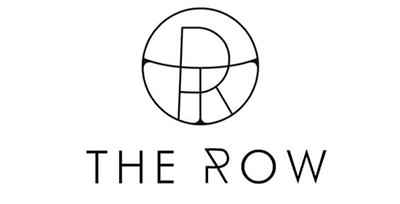Achieving client satisfaction is more than a goal—it’s the key to lasting business success. In the digital age, businesses face saturated market competition, shrinking the world and expanding our markets. This reality makes client satisfaction a critical metric. But how can businesses elevate their client satisfaction in a meaningful way?
Improve Client Satisfaction by Understanding Client Needs
We must understand our clients’ needs and expectations to deliver exceptional service and ensure client satisfaction. This involves going beyond surface-level desires and delving into the intricacies of what they truly seek from our services. By doing so, we can better align our offerings with their unique requirements, ensuring a more personalized and effective solution. This personalized approach is a powerful tool in our quest for client satisfaction.
Here’s how we can deepen our understanding:
- Active Listening: Understanding client needs hinges on active listening, which means attentively hearing their words and interpreting unspoken messages and concerns. This involves grasping their requirements, expectations, and fears by decoding the nuances in their communication.
- Identifying Needs and Expectations: Surveys, interviews, and direct feedback are essential for understanding client preferences. These methods provide detailed insights into client values, enabling tailored services and stronger client engagement strategies.
Developing a deeper insight into your client’s needs enables you to customize solutions that precisely address them. As a result, your clients will feel more valued and understood, fostering loyalty through their satisfaction.

Improve Client Satisfaction with Communication
Effective communication is crucial for building strong client relationships. Clear and consistent communication fosters trust, understanding, and collaboration, creating a solid foundation for growth, sustainability, and long-term success.
Why it matters:
Effective client communication involves regular project updates, issue resolution, and proactively sharing ideas and advice to help clients achieve their goals, fostering a collaborative partnership.
Communication should be:
- Effective and Transparent: Clear, concise communication is key to building trust. By being straightforward and honest, clients receive accessible information and feel respected. This acknowledges their needs, enhancing their overall experience and satisfaction.
- Regular Updates and Responsiveness: Consistent communication and responsiveness to clients are crucial for building a reputation for reliability and professionalism. This practice fosters trust, demonstrates commitment to excellent customer service, and ensures client satisfaction, leading to lasting business relationships.
Improve Client Satisfaction with Personalization & Customization
Standing out in the saturated market requires more than quality services and products; it demands a deep connection to your client’s unique needs and preferences. Personalization and customization are key strategies for meeting and exceeding client expectations.
Examples of Customization
Personalization can significantly impact client perception and loyalty, whether adapting service packages or product features. Here are some customization examples:
- Service Package Customization: Offering flexible service packages lets clients tailor services to their needs, budget, and goals. Options range from a basic package with add-ons to fully customized solutions targeting specific challenges or objectives.

Zoho excels in service customization with its comprehensive software solutions. Businesses can choose and pay only for the features they need, offering flexibility for small and large enterprises alike. This modular, scalable approach ensures personalized user experiences, fostering trust and long-term relationships.
- Customized Reporting: Customizing reports with key metrics and KPIs relevant to each client’s goals. This may mean creating tailored dashboards or reports focusing on the client’s areas of interest or concern.
- Personalized Communication Plans: Tailoring communication strategies to each client’s preferred frequency, format, and channel ensures personalized and effective information delivery, whether through emails, video calls, or face-to-face meetings.
Improve Client Satisfaction with Quality
The quality of your service or product is paramount to your success. Below, we examine why upholding these standards is critical for achieving and maintaining customer satisfaction and loyalty.
- High-Quality Deliverables: The quality of your product or service is crucial, reflecting your brand and values. High quality builds trust, sets you apart from competitors, and reinforces your business values with every customer interaction.

The Row is known for meticulous craftsmanship, premium materials, and timeless designs. Each piece exudes understated elegance, appealing to discerning clients who value refined luxury over flashy branding.
- Continuous Improvement: To exceed client expectations, we must continuously innovate, embrace new ideas, and challenge the status quo. We can meet current and future client needs by fostering a culture of improvement and cutting-edge innovation.
Improve Client Satisfaction with Feedback & Follow-up
Understanding and valuing our clients’ perspectives is crucial to our ongoing effort to deliver exceptional service. By setting up a process to collect client feedback, we measure satisfaction and show our commitment to improving our services.
- Collecting Client Feedback: Establish systematic feedback processes to boost client satisfaction and identify improvement areas. Use structured methods for clients to share their experiences. Analyzing this feedback provides valuable insights, helping organizations refine offerings and deliver superior value.
- Demonstrating Commitment through Follow-up: Acting on feedback is crucial to show clients their opinions matter. This involves analyzing feedback, identifying improvements, and implementing changes. Doing so enhances services, strengthens client relationships, and promotes continuous improvement.
Improve Client Satisfaction by Resolving Issues
Resolving issues and challenges quickly and transparently is crucial in customer service. This approach quickly reduces customer frustration and builds trust, showing the company values its time and is dedicated to solving problems. Efficient resolution strategies boost customer loyalty and greatly improve the customer experience, with speed and transparency as key to excellent customer service.
The strategies outlined below emphasize the importance of rapid, effective problem-solving and the role of transparency in building and maintaining trust with clients.
- Swift and Efficient Problem Resolution: Swiftly addressing problems turns potential negatives into positives, preventing customer dissatisfaction and boosting trust and loyalty. Prompt action shows commitment to service excellence and strengthens relationships.

Recognizing customer feedback, Beis addressed concerns about their bags getting dirty too quickly. Instead of ignoring complaints, they organized a popup luggage wash event, offering complimentary cleaning. This not only resolved the issue but also showcased their commitment to customer satisfaction and product care, strengthening relationships and reinforcing their reputation for excellent service.
- Transparency in Problem-Solving: Building client trust requires accountability and transparent communication, particularly in problem-solving. Creating an environment where clients feel heard and valued is crucial. Address issues straightforwardly and empathetically, taking responsibility and communicating effectively. This not only resolves immediate problems but also fosters lasting, trust-based relationships.

Real-Life Client Satisfaction Successes
Shared stories often inspire and give us hope, reminding us that we are not alone in our struggles and triumphs. This segment explores personal stories that shed light, providing insights and valuable lessons.

A leading online retailer of shoes and clothing, Zappos is famous for its outstanding customer service. They emphasize customer satisfaction with policies like a 365-day return and free two-day shipping. By investing in extensive employee training, Zappos ensures its customer service team has the authority to make customer-centric decisions, even at the cost of a sale. This approach has cultivated strong customer loyalty and extensive word-of-mouth referrals.
Southwest Airlines stands out for its outstanding customer service and distinctive corporate culture. They prioritize a pleasant flying experience, featuring complimentary checked luggage, no change fees, and an attractive loyalty program. The airline’s staff is recognized for their amiability and readiness to exceed travelers’ expectations. This strategy results in elevated levels of customer satisfaction and a devoted following.
Client Satisfaction Lessons Learned
Take a look at the examples below. Each company has creatively crafted solutions to tasks to boost customer happiness.
1. Empower Employees
- Example: Any employee at a hotel has the authority to use up to $2,000 to solve a problem for a guest.
- Lesson: Giving employees the authority to make immediate decisions can result in faster problem-solving and increased customer satisfaction.
2. Prioritize Customer Feedback
- Example: A healthcare practice proactively gathers patient opinions and rapidly adjusts based on those insights.
- Lesson: Consistently collecting and responding to customer feedback can help companies stay attuned to their customers’ requirements and enhance satisfaction.
3. Deliver Consistent Quality
- Example: Apple ensures the quality of its products and customer service by adhering to strict standards and comprehensive training.
- Lesson: Maintaining consistent quality in products and services builds trust and dependability, which is essential for achieving lasting customer satisfaction.
Improving client satisfaction is an ongoing process that demands attention, innovation, and a genuine commitment to client needs. By adopting a client-centric approach and implementing the strategies discussed, businesses can achieve higher levels of client satisfaction and sustainable business growth.
If you want to elevate your business’s client satisfaction further, consider contacting us for a consultation. Our expertise in Project Management Office (PMO) services might just be your solution.
Incorporating these strategies into your business practices can significantly improve client satisfaction, ensuring your clients not only stay with you but also become vocal advocates for your brand.





